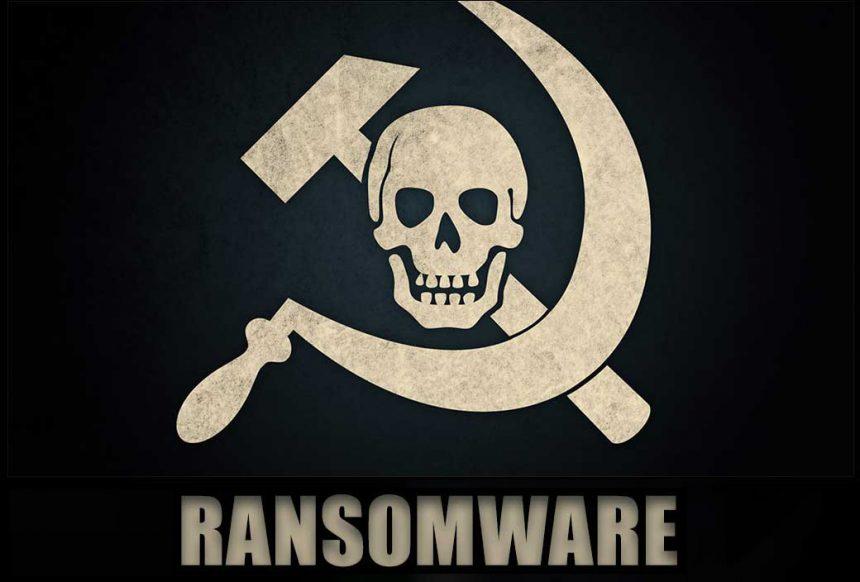Ransomware attacks have become one of the most severe cybersecurity threats in recent years. The TRUST FILES ransomware is a particularly malicious variant, notorious for encrypting files and stealing sensitive data before demanding a ransom for decryption. This threat can be devastating for individuals and businesses, potentially leading to data loss, financial harm, and reputational damage. In this article, we’ll explore how TRUST FILES works, how to remove it, and preventive measures to help safeguard your system from future infections.
Remove annoying malware threats like this one in seconds!
Scan Your Computer for Free with SpyHunter
Download SpyHunter now, and scan your computer for this and other cybersecurity threats for free!
What is TRUST FILES Ransomware?
TRUST FILES is a type of ransomware that encrypts critical files on the victim’s computer and demands a ransom payment for decryption. Upon infection, it leaves a ransom note on the desktop and inside each encrypted folder. The note contains instructions for contacting the attackers and paying for a decryption key to unlock the files.
Key characteristics of the TRUST FILES ransomware include:
- Encryption: It encrypts files with strong encryption algorithms, making them inaccessible without the decryption key.
- Data Theft: Besides encrypting files, the ransomware often steals sensitive data, including legal documents, financial records, audit reports, and other valuable business information.
- Ransom Demand: Attackers demand a ransom in Bitcoin in exchange for the decryption key. If victims do not pay within a certain timeframe (usually 4 days), the stolen data is threatened to be sold or made public.
- Contact Methods: Victims are instructed to contact the attackers via email (TrustFiles@skiff.com or TrustFiles@onionmail.org) or Telegram for further instructions and to negotiate the ransom.
How Does TRUST FILES Ransomware Work?
- Infection: TRUST FILES typically spreads through phishing emails, malicious attachments, or compromised software downloads. Once the malware gains access to the victim’s system, it executes its payload, which begins encrypting files.
- Data Exfiltration: The ransomware isn’t limited to file encryption. It also steals sensitive data, including personal, financial, and corporate information. This data is then used as leverage in the ransom demand.
- Encryption Process: The ransomware targets important files on the victim’s system, including databases, legal documents, financial records, and backups. Files are encrypted using advanced encryption techniques that are nearly impossible to break without the decryption key.
- Ransom Note: After the encryption process is completed, a ransom note appears on the desktop and inside encrypted directories. The note contains the victim’s ID, instructions for contacting the attackers, and details on how to purchase Bitcoin to pay the ransom.
- Ransom Demand: Victims are instructed to send an email to the provided contact addresses or message the attackers via Telegram to begin negotiations. If the ransom is paid, the attackers promise to send the decryption key. However, there is no guarantee they will honor this commitment.
How to Remove TRUST FILES Ransomware
Remove annoying malware threats like this one in seconds!
Scan Your Computer for Free with SpyHunter
Download SpyHunter now, and scan your computer for this and other cybersecurity threats for free!
If your system has been infected with TRUST FILES ransomware, it’s crucial to act quickly. SpyHunter is an effective tool for detecting and removing ransomware infections. Here’s a step-by-step guide on how to use SpyHunter to remove TRUST FILES:
Step 1: Run a Full System Scan
- Download and Install SpyHunter: If you don’t already have SpyHunter installed, download it from the official website and follow the installation instructions.
- Launch SpyHunter: Open SpyHunter on your computer.
- Run a Full System Scan: Click on the “Scan” button to initiate a full system scan. SpyHunter will search your system for the TRUST FILES ransomware and other potential threats.
Step 2: Review Scan Results
- Once the scan is complete, SpyHunter will display a list of all detected threats, including TRUST FILES.
- Review the results and ensure TRUST FILES is listed among the detected threats.
Step 3: Remove TRUST FILES
- Select TRUST FILES and click on the “Fix” button to remove the ransomware from your system.
- SpyHunter will automatically quarantine the malicious files and delete them, ensuring they can no longer harm your system.
Step 4: Restart Your Computer
After the ransomware has been removed, restart your computer to ensure that any residual files or processes related to the ransomware are terminated.
Step 5: Decrypt Your Files
- If you’ve paid the ransom and received the decryption key, you can use it to decrypt your files.
- If you haven’t paid the ransom, it’s recommended to use a professional data recovery tool or contact a cybersecurity expert for assistance.
Preventive Measures to Avoid TRUST FILES Ransomware and Other Attacks
While removing TRUST FILES is important, prevention is the best defense. Here are some preventive measures to help protect your system from future ransomware attacks:
- Use Strong Security Software: Install and regularly update antivirus software to detect and block ransomware before it can infect your system.
- Avoid Unsolicited Emails and Attachments: Phishing emails are the primary method used to spread ransomware. Avoid opening attachments or clicking links in unsolicited emails, especially from unknown senders.
- Backup Your Data Regularly: Regularly back up your important files to an external drive or cloud service. This ensures that even if your system is infected with ransomware, you won’t lose your critical data.
- Keep Software Up to Date: Ensure that your operating system, software, and applications are always up to date with the latest security patches. This helps close vulnerabilities that cybercriminals could exploit.
- Limit User Privileges: Restrict administrative privileges to reduce the ability of ransomware to spread and encrypt files. Use strong passwords for all accounts and change them regularly.
- Use Network Segmentation: For businesses, segmenting networks can limit the spread of ransomware and other malware, preventing it from affecting your entire system.
- Educate Employees: If you’re a business owner, train employees on the risks of ransomware and safe online practices to reduce the chances of an infection.
Conclusion
TRUST FILES ransomware is a severe cybersecurity threat that can cause significant damage to individuals and businesses. While paying the ransom is not recommended, using a tool like SpyHunter can help remove the malware and protect your system from further harm. To prevent future attacks, it’s essential to maintain up-to-date security software, regularly back up your files, and educate your team on safe internet practices. By following these steps, you can mitigate the risks associated with ransomware attacks and secure your data from future threats.
Text of TRUST FILES Ransomware’s Ransom Note “#README.hta“
TRUST FILES
Dear Client
If you are reading this message, it means that:
– your network infrastructure has been compromised,
– critical data was leaked,
– files are encrypted
The best and only thing you can do is to contact us to settle the matter before any losses occurs.
If You Want To Restore Them Email Us : Trustfiles@skiff.com
If You Do Not Receive A Response Within 24 Hours, Send A Message To Our Second Email : Trustfiles@onionmail.org
Or Contact via Telegram ID: hxxps://t.me/Trustfiles
1. THE FOLLOWING IS STRICTLY FORBIDDEN
1.1 EDITING FILES ON HDD.
Renaming, copying or moving any files could DAMAGE the cipher and decryption will be impossible.
1.2 USING THIRD-PARTY SOFTWARE.
Trying to recover with any software can also break the cipher and file recovery will become a problem.
1.3 SHUTDOWN OR RESTART THE PC.
Boot and recovery errors can also damage the cipher. Sorry about that, but doing so is entirely at your own risk.
2. EXPLANATION OF THE SITUATION
2.1 HOW DID THIS HAPPEN
The security of your IT perimeter has been compromised (it’s not perfect at all). We encrypted your workstations and servers to make the fact of the intrusion visible and to prevent you from hiding critical data leaks. We spent a lot of time researching and finding out the most important directories of your business, your weak points. We have already downloaded a huge amount of critical data and analyzed it. Now its fate is up to you, it will either be deleted or sold, or shared with the media.
2.2 VALUABLE DATA WE USUALLY STEAL:
– Databases, legal documents, personal information.
– Audit reports.
– Audit SQL database.
– Any financial documents (Statements, invoices, accounting, transfers etc.).
– Work files and corporate correspondence.
– Any backups.
– Confidential documents.
2.3 TO DO LIST (best practies)
– Contact us as soon as possible. – Contact us only in our Mails or Telegram, otherwise you can run into scammers. – Purchase our decryption tool and decrypt your files. There is no other way to do this. – Realize that dealing with us is the shortest way to success and secrecy. – Give up the idea of using decryption help programs, otherwise you will destroy the system permanently. – Avoid any third-party negotiators and recovery groups. They can become the source of leaks.
3. POSSIBLE DECISIONS
3.1 NOT MAKING THE DEAL
– After 4 days starting tomorrow your leaked data will be Disclosed or sold.
– We will also send the data to all interested supervisory organizations and the media.
– Decryption key will be deleted permanently and recovery will be impossible.
– Losses from the situation can be measured based on your annual budget.
3.2 MAKING THE WIN-WIN DEAL
– Databases, legal documents, personal information.
– You will get the only working Decryption Tool and the how-to-use Manual.
– You will get our guarantees (with log provided) of non-recovarable deletion of all your leaked data.
– You will get our guarantees of secrecy and removal of all traces related to the deal in the Internet.
– You will get our security report on how to fix your security breaches.
4. HOW TO CONTACT US
In our contact form or mail:
Contact via Telegram ID: hxxps://t.me/Trustfiles
Write us to the mails: Trustfiles@skiff.com or Trustfiles@onionmail.org
Write this ID in the title of your message Your ID is on the files
5. EVIDENCE OF THE LEAKAGE
5.1 You can request sample files chat to review leaked data samples.
5.2 Contact us only in our Mails or Telegram, otherwise you can run into scammers.
5.3 All leaked Data samples will be Disclosed in 4 Days if you remain silent.
5.4 Your Decryption keys will be permanently destroyed at the moment the leaked Data is Disclosed.
6. RESPONSIBILITY
6.1 Breaking critical points of this offer will cause:
Deletion of your decryption keys.
Immediate sale or complete Disclosure of your leaked data.
Notification of government supervision agencies, your competitors and clients.
TRUST FILES’ text file (“#README-TO-DECRYPT-FILES.txt“)
>>>>>>>>>>>>>>>>>>>>>>>>>>>>>>>>>>>>>>>>>>>>>>>>>>>>>>>>>>>>>>
>>>>>>>>>>>>>>>>>>>>>>>>> TRUST FILES <<<<<<<<<<<<<<<<<<<<<<<<
>>>>>>>>>>>>>>>>>>>>>>>>>>>>>>>>>>>>>>>>>>>>>>>>>>>>>>>>>>>>>>
– All Your Files Have Been Encrypted !!!
– Attention !!!
– All your important files have been stolen and encrypted by our advanced attack. Without our special decryption software, there’s no way to recover your data!
– Your ID: [-]
– To restore your files, reach out to us at: TrustFiles@skiff.com & TrustFiles@onionmail.org
– You can also contact us via Telegram: @TrustFiles
– Why Trust Us?
– Before making any payment, you can send us few files for free decryption test.
– Our business relies on fulfilling our promises.
Warnings:
– Do not go to recovery companies.
They secretly negotiate with us to decrypt a test file and use it to gain your trust
and after you pay, they take the money and scam you.
You can open chat links and see them chatting with us by yourself.
– Do not use third-party tools.
They might damage your files and cause permanent data loss.
– How to Buy Bitcoin?
– You can purchase Bitcoin to pay the ransom using these trusted platforms:
– hxxps://www.kraken.com/learn/buy-bitcoin-btc
– hxxps://www.coinbase.com/en-gb/how-to-buy/bitcoin
– hxxps://paxful.com
>>>>>>>>>>>>>>>>>>>>>>>>>>>>>>>>>>>>>>>>>>>>>>>>>>>>>>>>>>>>>>
>>>>>>>>>>>>>>>>>>>>>>>>> TRUST FILES <<<<<<<<<<<<<<<<<<<<<<<<
>>>>>>>>>>>>>>>>>>>>>>>>>>>>>>>>>>>>>>>>>>>>>>>>>>>>>>>>>>>>>>
TRUST FILES’ Desktop Wallpaper
Text presented on the wallpaper:
#TRUST-RANSOMWARE
All Your Files Are Encrypted
for more information see #README-TO-DECRYPT-FILES.TXT that is located in every encrypted folder





